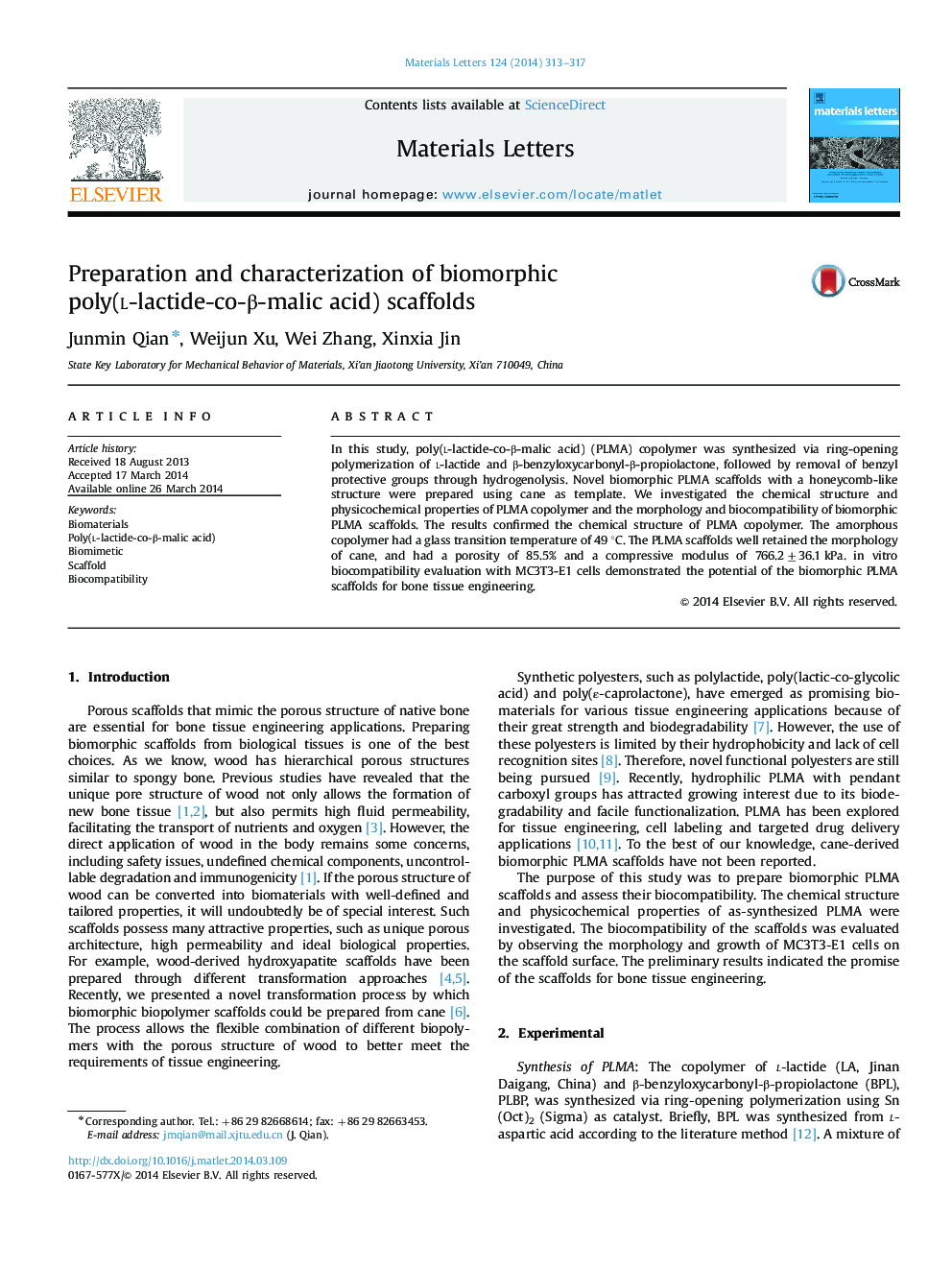| Article ID | Journal | Published Year | Pages | File Type |
|---|---|---|---|---|
| 1644440 | Materials Letters | 2014 | 5 Pages |
•The as-synthesized PLMA copolymer was amorphous and had a Tg of 49 °C.•Novel biomorphic PLMA scaffolds with parrallel channels were successfully prepared.•The PLMA scaffolds had a porosity of 85.5% and a compressive modulus of >750 kPa.•The biomorphic PLMA scaffolds could support MC3T3-E1 cell attachment and growth.
In this study, poly(l-lactide-co-β-malic acid) (PLMA) copolymer was synthesized via ring-opening polymerization of l-lactide and β-benzyloxycarbonyl-β-propiolactone, followed by removal of benzyl protective groups through hydrogenolysis. Novel biomorphic PLMA scaffolds with a honeycomb-like structure were prepared using cane as template. We investigated the chemical structure and physicochemical properties of PLMA copolymer and the morphology and biocompatibility of biomorphic PLMA scaffolds. The results confirmed the chemical structure of PLMA copolymer. The amorphous copolymer had a glass transition temperature of 49 °C. The PLMA scaffolds well retained the morphology of cane, and had a porosity of 85.5% and a compressive modulus of 766.2±36.1 kPa. in vitro biocompatibility evaluation with MC3T3-E1 cells demonstrated the potential of the biomorphic PLMA scaffolds for bone tissue engineering.
